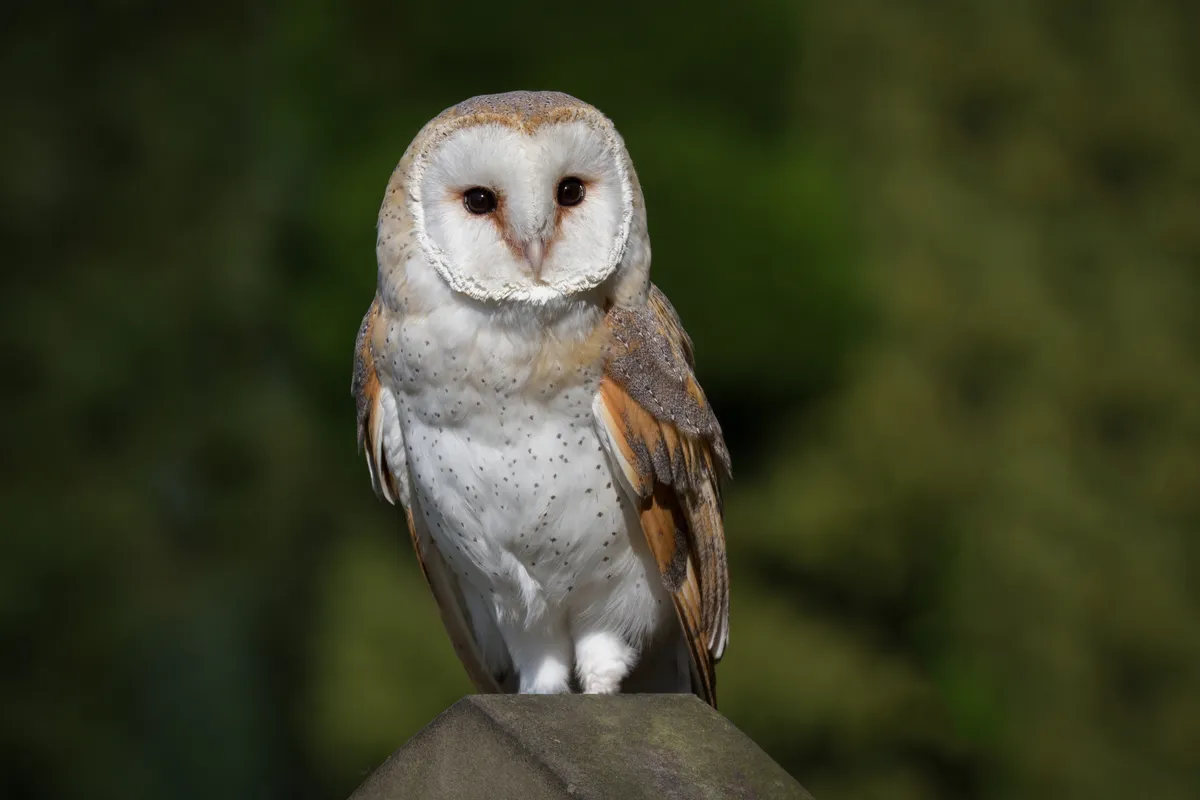The tawny owl (Strix aluco) is the most common owl in the UK, found across England, Scotland, and Wales in woodlands, parks, gardens, and farmland.
Recognisable by its mottled brown or grey plumage, large round head, and haunting dark eyes, it is often heard rather than seen, thanks to its iconic “twit-twoo” call. Tawny owls have a wingspan of around one metre and weigh roughly 500g.
- What is the smallest owl in the world? Meet a tiny cutie
- What's the biggest owl? Here's a clue – it has a colossal 2 metre wingspan
This adaptable, nocturnal hunter feeds mainly on small mammals but will also take birds, frogs, and insects. While widespread throughout Britain, the tawny owl is notably absent from Northern Ireland and the Isle of Man.
Which other owl species can be spotted in the UK?

Alongside our resident species, a few other owls occasionally make an appearance, including barn owl, long-eared and short-eared owl. The snowy owl, a striking visitor from the far north, is rarely seen but has been known to breed here in the past.
Where do tawny owls nest?
Tawn owls tend to stay in the same area for most of their lives and will often reuse sites for nesting – sometimes even laying their eggs in old crow’s nests or squirrel dreys. When looking for signs of tawny owls, keep an eye out for owl pellets – the compact bundles of indigestible material wrapped in fur that owls cough up to protect their digestive system.
Where to see them
Tawny owls favour woodlands but can also adapt to wooded parks and suburban areas. As a sedentary, territorial species, they rely on detailed knowledge of their woodland territory, hunting small mammals.
Tawny owls have thrived compared to other owl species thanks to their versatile diet, which includes small mammals, amphibians, bats, birds, and even earthworms.
How do tawny owls communicate?

Tawny owls’ round facial discs help funnel sound to their ears, which are set slightly asymmetrically to give them exceptional directional hearing.
Males use their hoot to mark out territory, with each individual call having a unique structure. Studies show that males can recognise familiar neighbours from their calls and react more strongly to strangers.
Calls also reveal information about the owl’s size, health, and even breeding success. For example, larger males tend to have lower-pitched calls with a longer final vibrato, while males carrying more blood parasites produce calls with fewer frequencies. A citizen science survey was carried out in 2021 to find out more about tawny owl behaviour and distribution.
Discover more fascinating owl species and facts:




